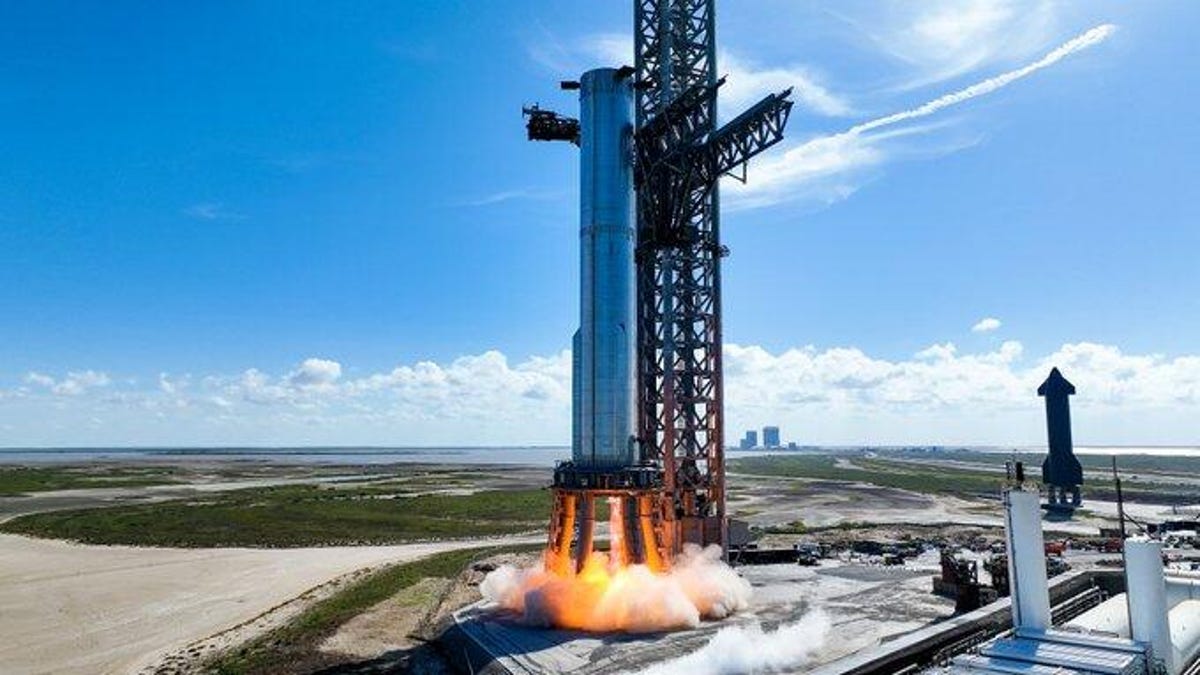Watch SpaceX Teams Guide Starship Booster in Place By Hand For Key Test Firing
The company building autonomous systems to go to the moon and Mars prefers wrangling its biggest booster rodeo style.

The big booster meant for Starship mission got a step closer to flight.
Elon Musk's rocket company SpaceX pioneered autonomous landing of orbital rockets, using droneships and even plans to catch its Super Heavy boosters using giant automated arms attached to its launch tower. But when it came time to negotiate getting one of the big next-generation boosters in place for a static fire test, the futuristic company did it the old-fashioned way.
SpaceX-stalking YouTube channel Cosmic Perspective was on hand at the company's Starbase facility in Texas to watch a crew guide a 70-meter (230-foot) tall Super Heavy booster 7 into place by hand. No autonomous systems, laser links or self-driving algorithms were involved; instead it was just a bunch of workers and a whole lot of rope, as if the rocket were part of a rodeo or a resident of Brobdingnag.
The below video of literal rocket wrangling was captured a few days ago, in preparation for a successful static test firing of a single-engine version of the rocket Tuesday afternoon.
Super Heavy has been test fired before, but this was the first such test from the actual orbital launch mount on the pad where we're likely to see the pairing of a Super Heavy and Starship make their first trip to space in the coming weeks or months.
Team at Starbase completed a single Raptor engine static fire test of Super Heavy Booster 7 on the orbital launch pad pic.twitter.com/16R7eE985V
— SpaceX (@SpaceX) August 9, 2022
Starbase actually hadn't seen any test fires in 2022 until Tuesday. It has been uncharacteristically quiet as the company focused on ramping up Raptor engine production while waiting to receive key regulatory approvals for the first orbital Starship demonstration mission.
In June, SpaceX received good news that it would clear a key hurdle in the form of a required environmental review, contingent on the company making dozens of alterations to its mission plan.
The Federal Aviation Administration has yet to issue a launch license for Starship to go to space, which will be the last item on a long checklist before the rocket designed to eventually carry humans to the moon and Mars can finally get a little taste of orbit.

